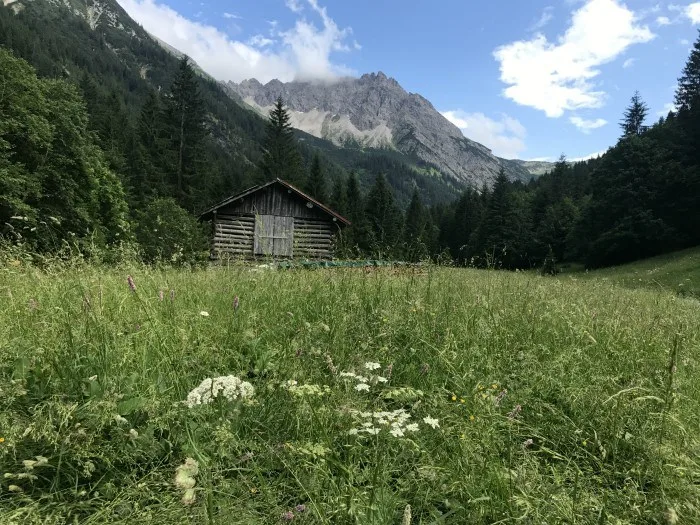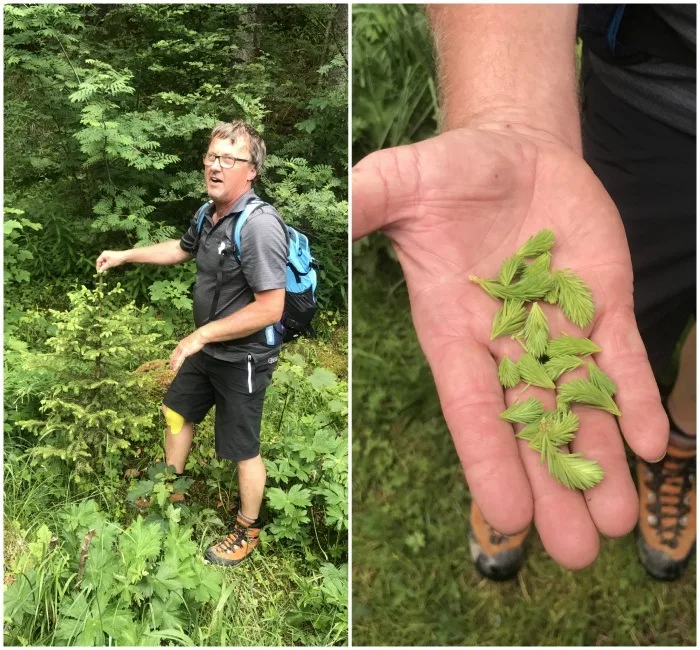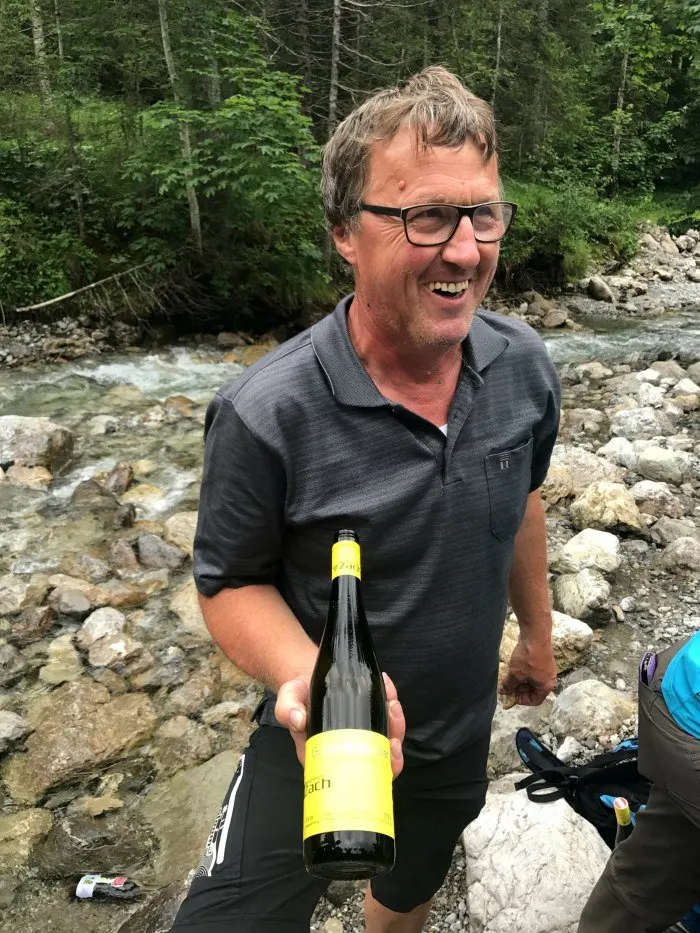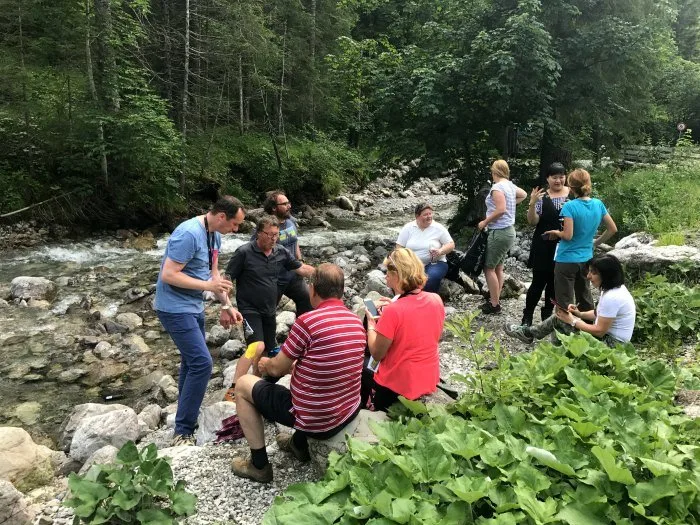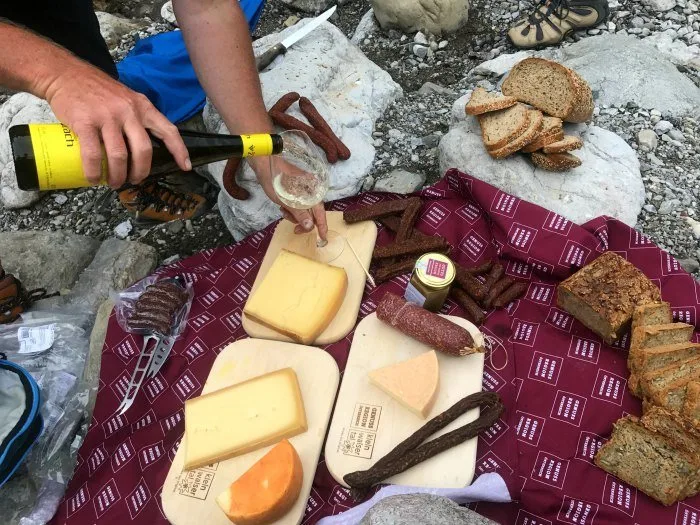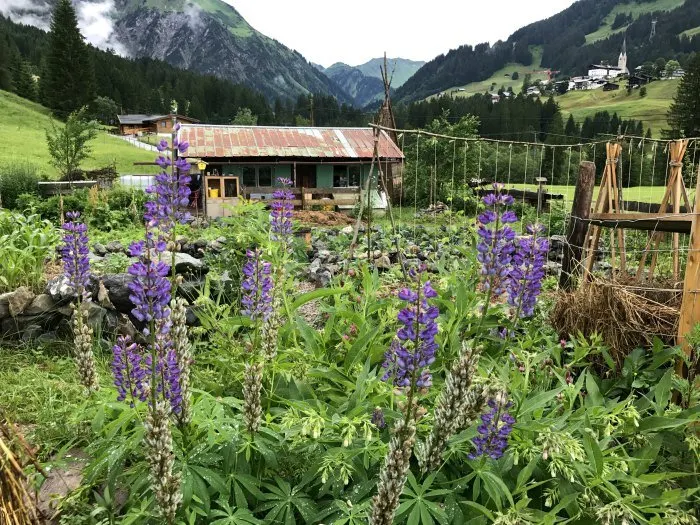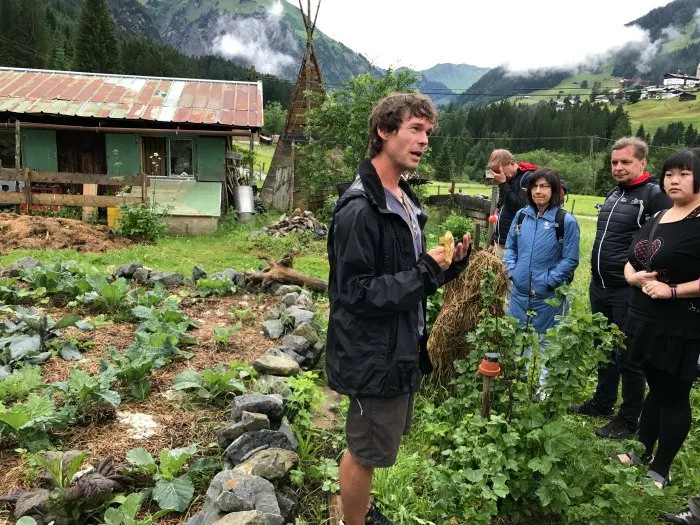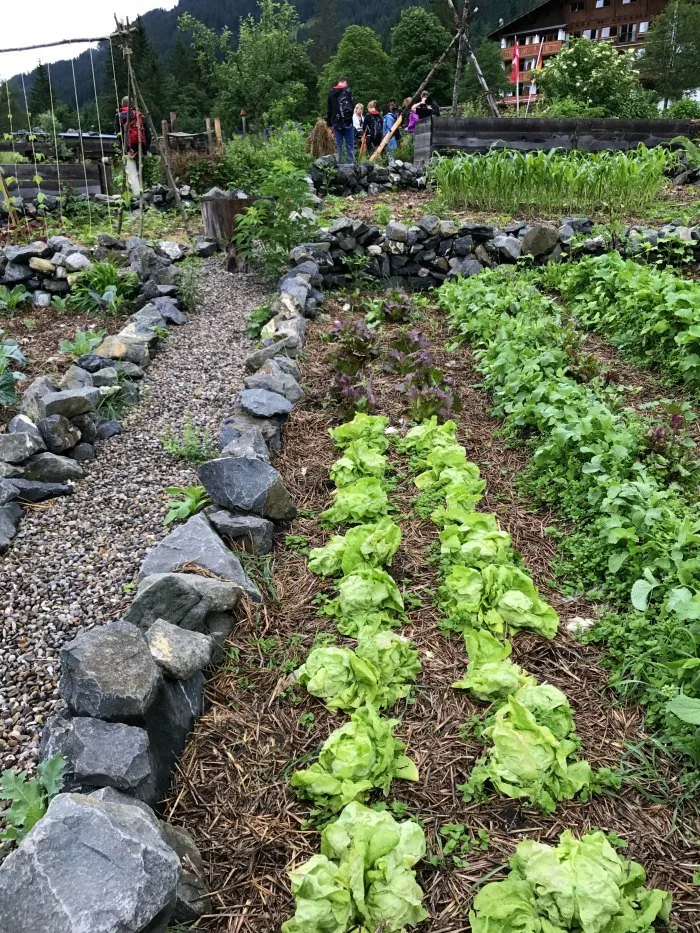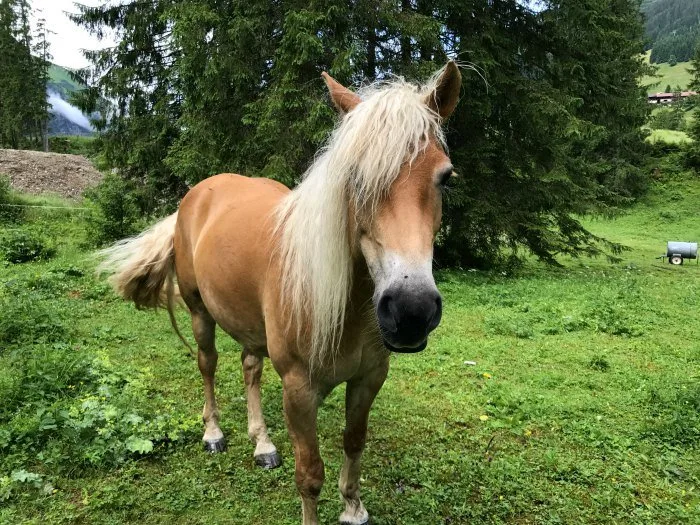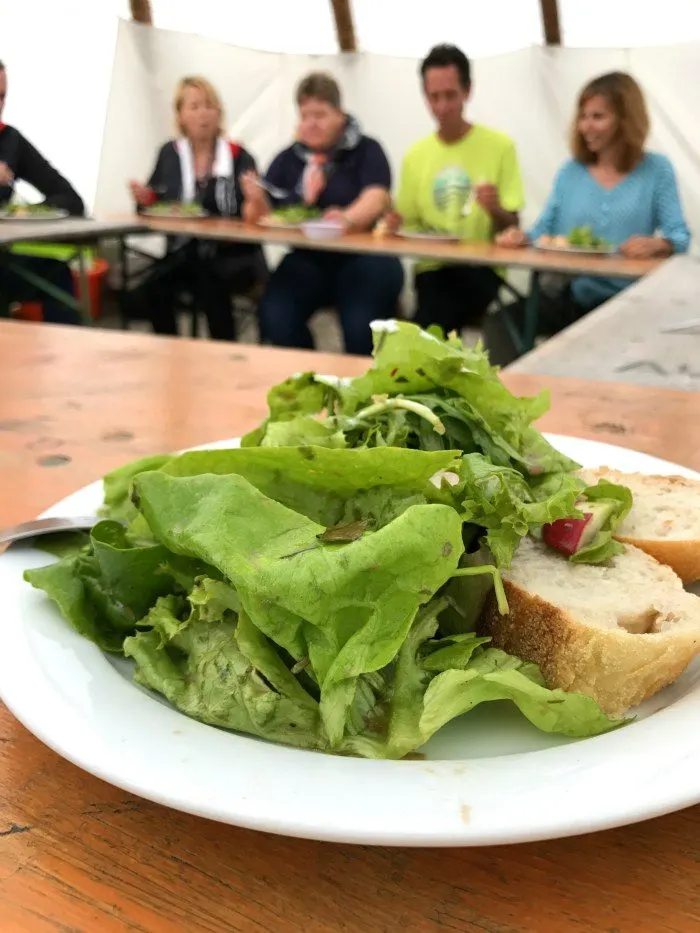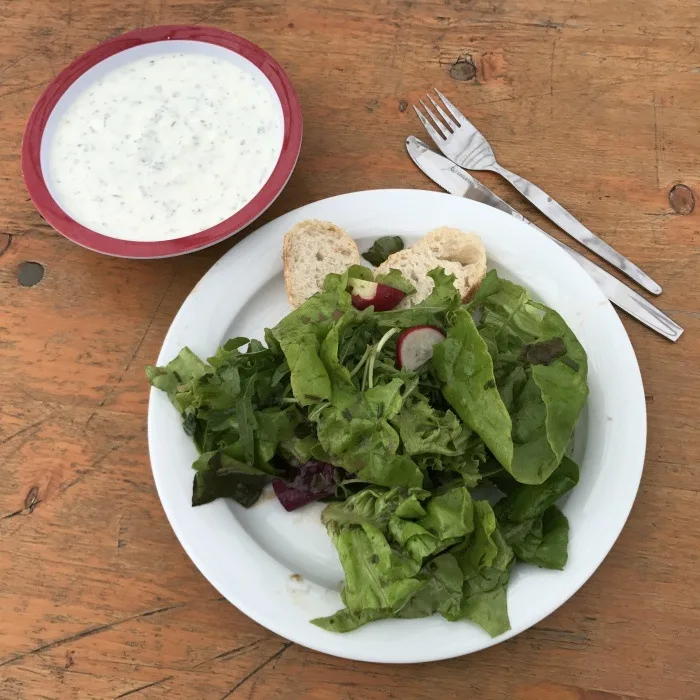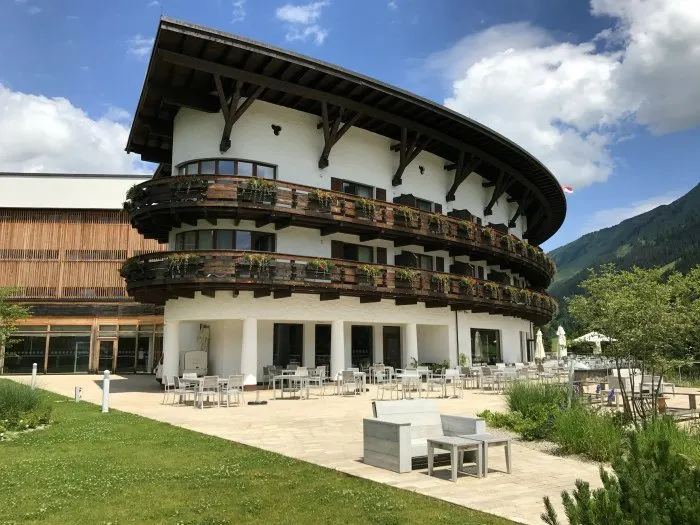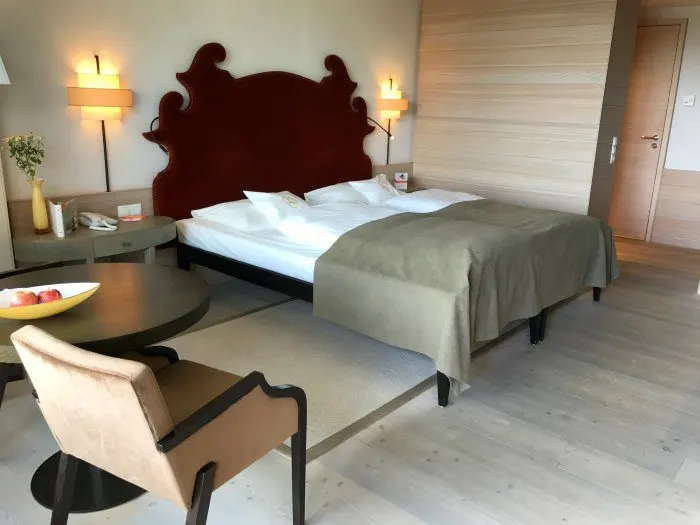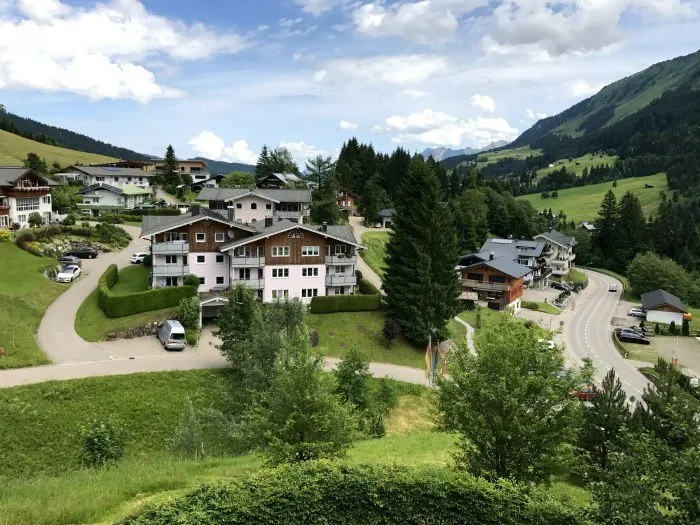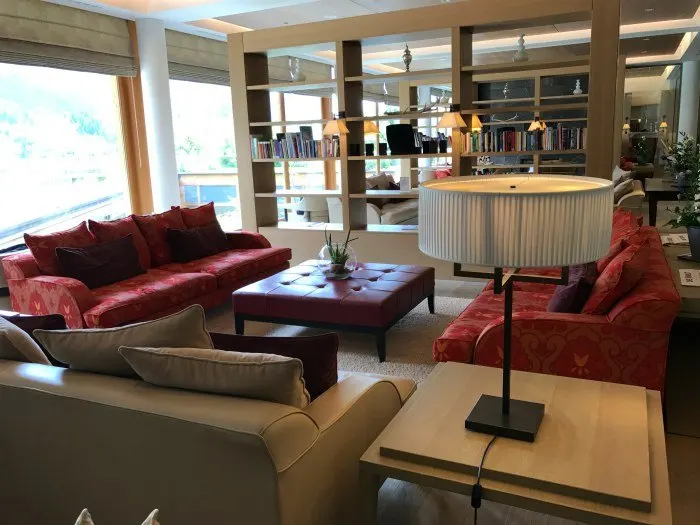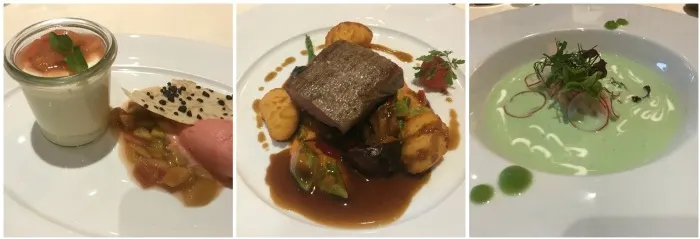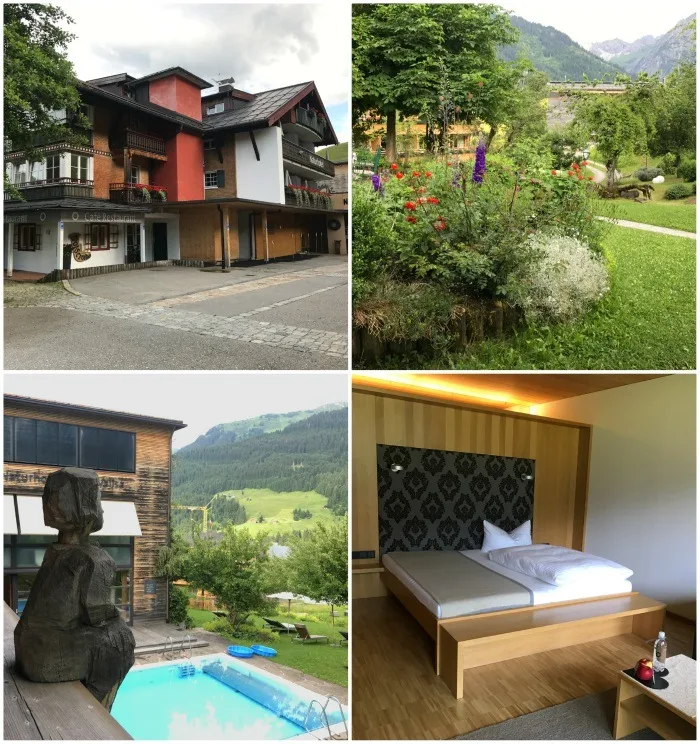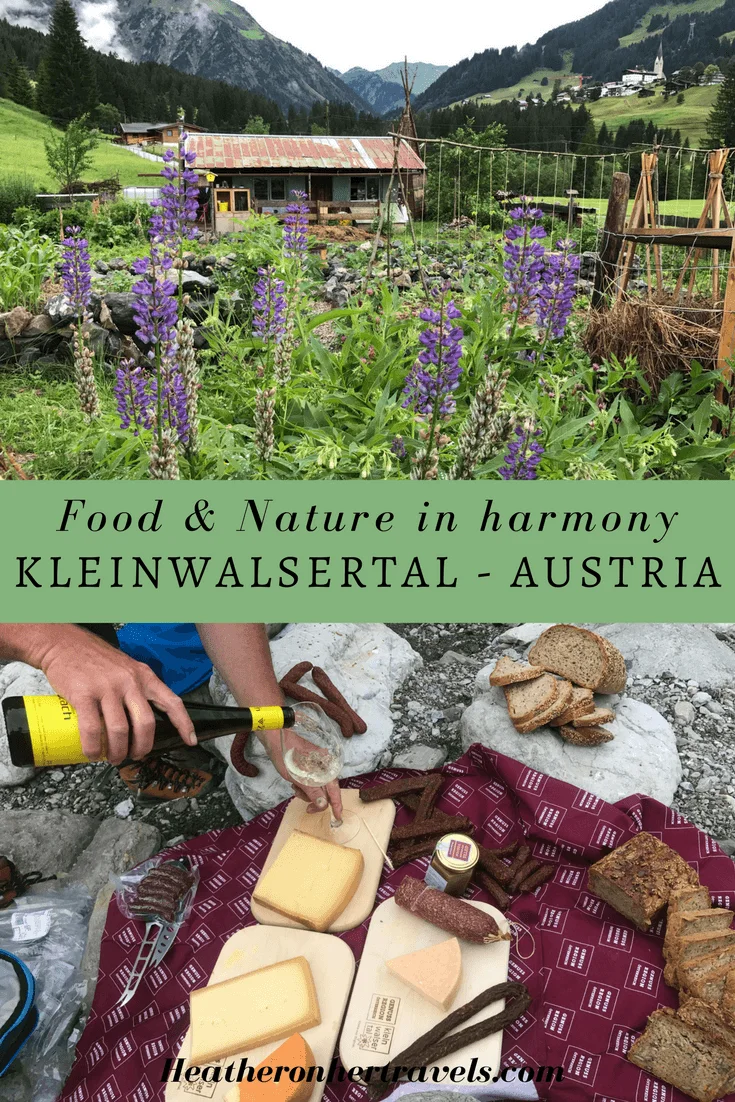Mindfulness, simplicity and sustainability. These are aspirations for many travellers who seek an authentic experience in natural surroundings as a balance to the rushed pace of everyday life. In the high alpine valley of Kleinwalsertal in the Vorarlberg region of Austria, I found a chance to enjoy the calm of nature and connect with some of the people who live in this valley. While Kleinwalsertal is well organised for visitors, the emphasis is on sustainability, with farmers and local producers who are guardians of the landscape, and a GenussRegion food movement that’s about keeping things simple and local.
This article may contain affiliate links that provide commission on purchases you make at no extra cost to you. As an Amazon Associate I earn from qualifying purchases.
We met up with Herbert Edlinger, a former chef who now works with local farmers to showcase the natural food of the valley, taking visitors on foraging tours. Herbert told us how first came to the Kleinwalsertal valley in 1979, expecting to work for just a season, but ended up staying and worked for 9 years as a chef in a local restaurant.
To preserve the landscape of this valley, farmers need to work in harmony with nature, so Herbert came up with the idea of marketing local produce and creating unique foods that would use the herbs, plants and berries that are found here.
The cows that graze in the summer pastures feed on 45 different alpine herbs, the flavours coming through in the cheese and the meat that’s produced in these mountains. It’s good for business too, since a farmer who is able to make and sell his own yoghurt and cheese will earn €1 per litre of milk, rather than only 30 cents if he sells the milk alone.
Read more: 10 reasons to visit Vorarlberg in Austria
The name Kleinwalsertal means “small Walser valley” and refers to the Walliser people who settled in the valleys of Vorarlberg. They migrated here around 1300 AD from the Swiss cantons bringing their own dress, customs and dialect. Our walk through the valley takes us past wooden Walser houses that are over 400 years old, the traditional design allowing for a room at the back where the animals would be housed.
Some of the older houses are faced with wooden shingles, with small windows designed to keep out the cold and traditional green shutters. If the wood of the house is almost black, it’s not because of any stain or preservative, but because the pine wood darkens naturally with age when exposed to the sun. The older windows have small sections that open for ventilation in the warm summer months – “Alpine air conditioning”, we were told.
Read More: Antony Gormley and Art in the mountains of Vorarlberg
As we wander along the forest path, Herbert dives into the undergrowth and plucks some pungent leaves of wild garlic for us to smell. This is the plant that he uses to make his popular wild garlic pesto that he sells in the weekly market and from his website. From a few small pine trees, hardly more than bushes, Herbert plucks the young pine shoots which can be cooked with lemon, sugar and water to make a spread that’s also a home remedy for coughs.
Herbert leads us to a spot on the stony riverbank where the water is shallow but fast flowing and we stop for lunch. Out of his rucksack appear slabs of cheese from the local farms, some young and creamy, others rich and mature. There are dried sausages and solid slices of nutty bread, studded with pumpkin seeds and walnuts, which we eat with mustard scented with mountain hay. To drink there’s a fresh Grüner Veltliner white wine and to finish Herbert’s sweet schnapps made with green walnuts.
If you want to eat food in Kleinwalsertal that’s authentic and local, look out for the GenussRegion mark in shops and restaurants. The movement includes farmers who are rearing high quality beef and cheeses from the Alpine cattle, the mountain huts that you might pass on your hike that serve local and regional produce, or the restaurants that take pride in serving the flavours of the region. Find out more about where you can find the GenussRegion mark in Kleinwalsertal.
Read More: 14 things that Foodies will love in Graz, Austria
If you go: Herbert Edlinger runs his foraging walks from 18 May – 2 November. They take place every Thursday at 9:30 am starting from Walserhaus Hirschegg or by appointment for larger groups. The walks last about 4 hours and costs €25 per person including refreshments with local products. More information on the Kleinweisertal website.
I hope you enjoy this video about summer in the mountains in Vorarlberg
If you can’t see the video above about summer in Vorarlberg, you can download directly here, see it on my blog here or Youtube here and please do subscribe using the button above.
Visiting the Narandi Permaculture Garden
The next day we visited another project that’s developing a more sustainable way of food production in Kleinwalsertal. The Narandi permaculture garden was started in 2011 by Andreas Haller, who was prompted by the Fukushima nuclear plant disaster to rethink his lifestyle and create something that would be sustainable for generations to come. In the challenging climate of Kleinwalsertal at an altitude of 1150 metres, we found the permaculture garden with its tangled mixture of over 100 herbs, vegetable and fruit.
As Andi explained, permaculture thinking isn’t new; it draws on the learnings of farmers over the centuries on the best way to grow food in tune with nature, but was brought together as a movement by Bill Mollison in Australia. Even friends and family had doubts about Andi’s permaculture project; he told us; “My grandmother said, don’t do it, it will never work, but from the first season the vegetables grew bigger and bigger”.
Read more: 10 reasons to visit Vorarlberg in Austria
We wandered around the garden, where salads and vegetables mingled with flowers. The large beds were bordered with rocks, which retain the warmth of the sun during the day and radiate it out during the night. Because of the altitude it can be difficult to grow many of the local fruit varieties, but by planting trees as a shelter zone around the plot, Andi has created a warmer microclimate that will support apples, plums, cherries and other fruit. The garden may look like a chaotic mixture of plants twining through each other, but the permaculture way is to emulate nature, which thrives without the need to be neat and tidy.
In the Narandi garden, even slugs are welcome as nature’s waste disposal mechanism and insects are encouraged with upside down pots filled with dried straw around the garden. Surrounded by the mountains, it’s easy to feel connected to the natural world and Andi tells us: “It’s considered normal to speak with dogs, cats, horses and cows, and so it’s normal for me to speak with my plants, the slugs, the birds and anything in the garden.”
Permaculture is all about working in tune with nature and in the Narandi garden the aim is to make things easy for yourself. Here the plants are never watered but survive on rainfall and the planting is done in a cycle with the moon. Andi prefers to plant as the moon is waning to ensure the energy goes into the roots of new plants and give them the best start. Sheep’s wool is scattered around some of the beds, to discourage the deer, fox and rabbits that come into the garden to eat the plants, since they all hate the smell of sheep.
Read More: Antony Gormley and Art in the mountains of Vorarlberg
Andi proudly shows us a potato tower, where a pile of straw is contained with wire mesh, planted with potatoes in layers, which can then be harvested at the end of the season just by pulling the straw apart. After our tour of the garden, we walk along the path into another field, where some beautiful caramel horses are grazing, flicking their blonde manes from their eyes.
In a large tepee we sit at the table to eat a salad of leaves picked this morning from the Narandi garden, fresh and delicious with just a few slices of bread. This is where Andi sometimes holds summer camps for children from the city, to allow them to enjoy playing outside and learning about the natural world. He has found that even those with behavioural problems seem to be calmed by living outside and sleeping in the teepee.
The Pemaculture lifestyle seems an idealistic one but Andi counts it as a big bonus that his garden allows him to grow much of his food, living simply without the need to make a lot of money. While he’s not growing his crops for commercial sale, he can barter and exchange them for things that he needs with other local producers. ” I don’t say that this is the best way of living” he tells us, ” but it’s the best way for me.”
Andi opens the garden on Tuesday afternoons for group tours and runs workshops and childrens’ camps in his teepee, although he doesn’t want things to get too big. For him, the priority is working in the garden, to communicate the ideas of permaculture about living in a sustainable way in harmony with nature. “To be authentic is important for me, to give the spirit to people so that they can catch the idea and take it home.”
If you go: Find out more about the 3 hour tours run by Andreas Haller each Tuesday at 2pm €12 per person on the Kleinwalsertal website. Visit the Narandi Permaculture Garden website.
Read More: Antony Gormley and Art in the mountains of Vorarlberg
Where to stay in the Kleinwalsertal valley, Vorarlberg, Austria
Hotel Travel Charme Ifen
It was a pleasure to stay at the beautiful Hotel Travel Charme Ifen which is situated in Hirschegg in the Kleinwalsertal valley. The 5 star hotel has two main buildings, the original hotel building with airy open foyer, which was renovated when Travel Charme took this over, and the newer curved wing where the rooms all have balconies overlooking the valley. In front of the hotel is a large open terrace with landscaped plantings leading out from the restaurant, and there are open air pools on the lower level leading out from the spa.
My elegant and stylish room in the curved building had pale larch wood and restful shades of soft green, with an oversized stylized headboard. I loved the luxurious bathroom with a bath and shower and the balcony overlooking the valley as well as delightful touches like the bowl of fresh apples.
Adjoining the reception area were plenty of seating areas overlooking the terrace, with a fireplace for cosy winter evenings, the decor was stylish and modern. From here we walked through to the large restaurant where we had dinner in the evening and there’s also a smaller Kilian Stuba restaurant for gourmet dining, which has been awarded 1 Michelin Star.
From the Theo’s restaurant set menu I ordered a cucumber and yoghurt chilled soup with smoked salmon tartar, a main course of Walser lamb saddle with braised bean cassoulet and pomme dauphine and a desert of light curd mousse with poached rhubarb and rhubarb sorbet and white chocolate wafer, all delicious.
Read More: Antony Gormley and Art in the mountains of Vorarlberg
For more information and to book: Hotel Travel Charme Ifen
Natur Hotel Chesa Valisa
While in Kleinwalsertal I also visited the Natur Hotel Chesa Valisa, which is run by the Kessler family, who have built the hotel up from a simple pension, although the original house has been in the same Walser family for 500 years. New buildings have been added to the original traditional house in line with the Natur concept, which goes beyond Bio or Organic food to encompass a sustainable philosophy in architecture, business and every aspect of the hotel.
All the materials in the hotel are natural and organic and the architectural style is very clean and simple, with pine wood exterior that darkens naturally over time. The hotel works very closely with farmers to source all their food from the valley and everything including the wine and beer is 100% organic. There is a spa with sauna, relaxation room and heated outdoor pool and all treatments follow Ayurvedic principles.
For more information and to book: Natur Hotel Chesa Valisa Website
Information for visiting the Kleinwalsertal Valley in Vorarlberg, Austria
Vorarlberg is the most eastern of Austria’s regions, known for its unspoiled mountain scenery and natural beauty and within this region the Kleinwalsertal valley is close to the border with Germany. Find out more on the Vorarlberg Tourism website and the Kleinwalsertal Tourism website.
You can also find information on Austria Tourism website to plan your holiday in Vorarlberg.
Because of the mountains surrounding the Kleinwalsertal valley, it is most easily reached by road from Germany and the closest major airports are Zurich, Munich or Stuttgart (around 2 hrs 45 mins).
The Walserbus provides a regular bus service throughout the valley and is free for those with a Kleinwalsertal Guest card, which you can request at your hotel. The service has been designed so that you can enjoy all the activities in the valley, while leaving your car at home or at the hotel during your stay.
Thanks to Vorarlberg Tourism who hosted my visit to their region of Austria
Pin It
This article is originally published at Heatheronhertravels.com


